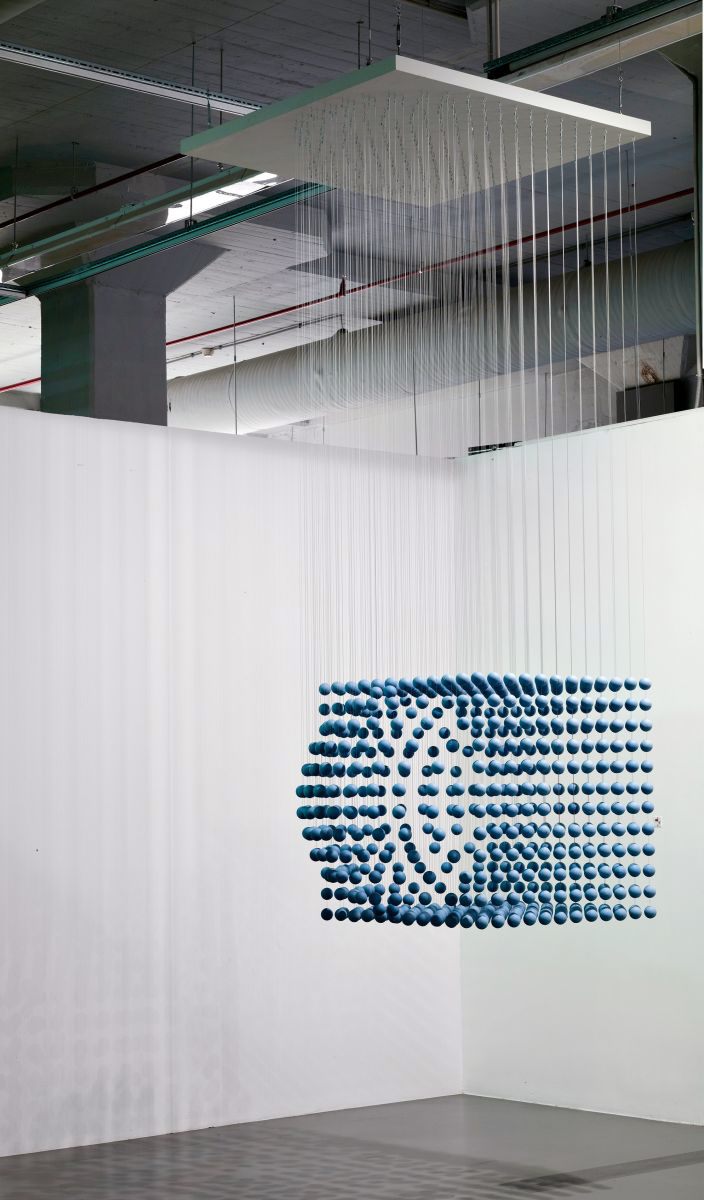- Open Today: 10.00–18.00
- Ticket
- Shop
- Membership
- TR EN

Canan Dağdelen, 1960
AT polar covalent bonded HOME dot, 2011
Canan Dağdelen was born in 1960 in Istanbul. She attended Vienna University of Economics and Business, graduating in 1986, and received her master’s degree from the University of Applied Arts Vienna in 1991. She continues to live in Vienna. The focal point of her work is architecture, although the historical development of writing also forms part of her thought and research. She is also keenly interested in the relationship between time and memory in photographic images.
In her installations, Dağdelen explores from a sociological perspective the concepts of settling down, affiliation, permanent order, and finding a place for oneself by defining them in architectural terms. Through modular spheres that the artist calls “dots”, she reduces architectural structures to their smallest units and situates them in a space. The emptiness within these structures, whose shape is created through an arrangement of suspended porcelain spheres, becomes important, especially in terms of the relationship between the part and the whole. Delocalized and decontextualized, these architectural constructions situated in space are works that transcend time and space. Antagonistic relations such as construction and deconstruction, past and present, and virtual and real are perceived simultaneously. The installations create their own poetic language.
In her latest work, entitled “AT polar covalent bonded HOME dot”, she examines the concept of the “house” from different perspectives. While Dağdelen previously used existing fundamental architectural forms, in her latest work she goes one step further and creates an architectural shape of her own. In this work, she refers to the chemical bonds resulting from changes in electron distribution caused by the bonding of atoms. The covalent, particularly the polar covalent bond, is Dağdelen’s focus. Dağdelen draws an analogy between the function of architectural elements and a common polar covalent bonded attraction between the two different types of atoms that come together in a water molecule, H2O, and the sharing of electrons in the outer electron trajectory. She achieves a new form in the work entitled “AT polar covalent bonded HOME” dot, which consists of two domes and one cubic body. The way in which it is situated in space encourages viewers to seek its form and discover its own unique language.
Installation
Porcelain, fine steel cord
Dr. Nejat F. Eczacıbaşı Foundation Collection
Istanbul Museum of Modern Art / Long Term Loan